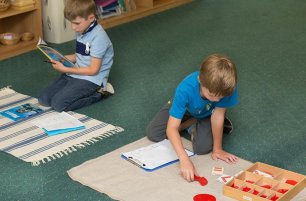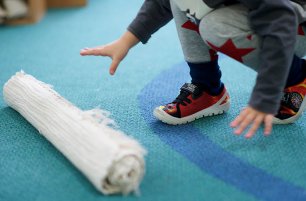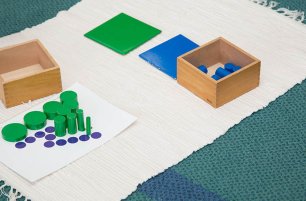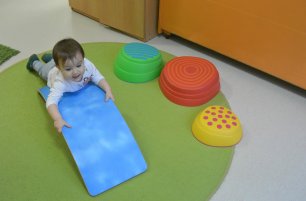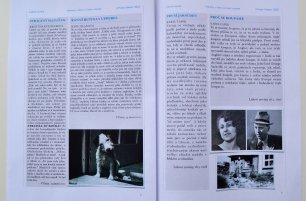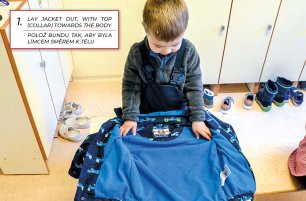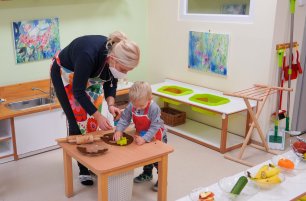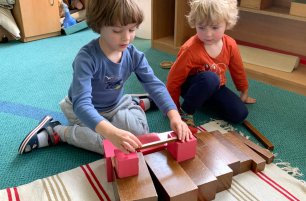Magic mat
There are a few things typical to Montessori classrooms worldwide that might give the casual observer a pause. Picture it: you walk into a beautiful Casa environment, full of children working, many of them on mats rolled out on the floor. The students moving through the room know to step between mats, never on them. Of course, in the beginning of the school year it took many presentations, repetitions and reminders to instill this routine in the students.
Why do we invest the time, effort and cost in setting up these tools and instilling their proper use in the children?
 First of all, Dr. Montessori would undoubtedly tell you that the effort of the students, in manipulating and using trays and mats properly, carries its own reward. Rolling a mat up neatly and tightly takes significant effort, especially to a young child, and practices coordination, care and concentration – all things we believe are important for children to gain. There is, however, much more.
First of all, Dr. Montessori would undoubtedly tell you that the effort of the students, in manipulating and using trays and mats properly, carries its own reward. Rolling a mat up neatly and tightly takes significant effort, especially to a young child, and practices coordination, care and concentration – all things we believe are important for children to gain. There is, however, much more.
The classroom materials and lessons are – any teacher will tell you – very special things. We treat very special things with care. We don’t allow them to be strewn across the floor, kicked, lost. Instead, we carefully lay them out on beautiful woven mats when working on the floor. This order has a higher purpose and Dr. Montessori spoke often of the need to make the child’s environment beautiful, to fill it with things of value, and to present them in a way that communicates our appreciation of them.
Most importantly, the mat is an enormous practical aid to the child. It defines her space, forms the boundaries of her work, allows her to oversee all of it at a glance. Compare this to a box of legos strewn all around the floor! In a group, it also allows the child to be respectful of others’ space, and others to be respectful of her – she knows to not let her activity spill outside of the mat and others will know not to step on or take items from her mat, even when she leaves it for a time.
These functions fulfill a fundamental need of the child – one of order and orientation in the environment. We cannot overstate the need of supporting this need in children – or, really, in people of all ages. So whether you work with children in a school setting, are looking for ideas setting up a home environment for your own children, or even for a way to brighten up your own living areas – we hope you will consider investing in a few pretty mats and trays.
By Michaela Tučková - IMSP Teacher
Want to learn more? Read our next article:

